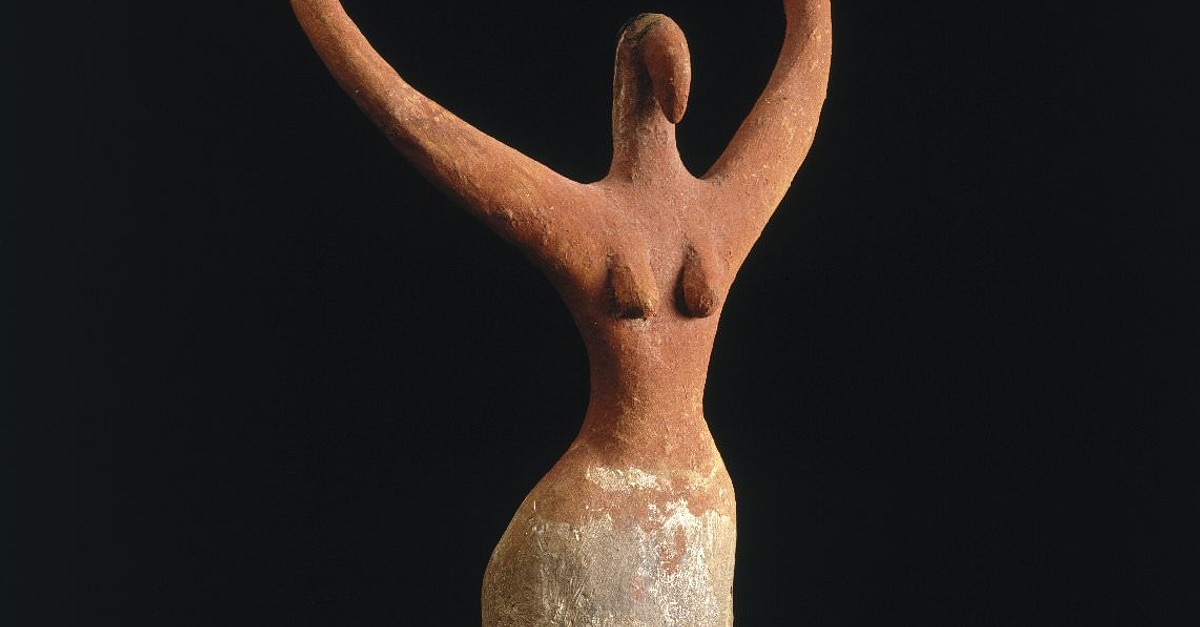Introduction
The terracotta figure of a woman from El Ma’marîya, Egypt, dating back to the Predynastic Period (Naqada IIa, 3500–3400 B.C.), offers a fascinating insight into the artistry and societal values of early Egyptian civilization. As one of the earliest known examples of figurative art in Egypt, this artifact sheds light on the spiritual, cultural, and social dynamics of a society in the process of shaping its identity.

Historical Context of the Predynastic Period
The Predynastic Period in Egypt marked a transformative era, laying the foundation for the complex society that would emerge in the Old Kingdom. During this time, small communities began consolidating, advancing agriculture, and developing trade networks. Artifacts like the terracotta figure reflect the growing sophistication of craftsmanship and the increasing importance of symbolic representation in both daily life and spiritual practices.
The Significance of the Figurine
Representation of the Female Form
The terracotta figure’s stylized depiction of a woman underscores the central role of femininity in early Egyptian society. Women were often associated with life, fertility, and continuity, themes that were crucial in a society dependent on agriculture and natural cycles. The figurine may have been created to honor these qualities, symbolizing the nurturing and life-giving aspects of women.

Spiritual and Ritualistic Function
Figurines like this one may have been used in rituals related to fertility, protection, or divine worship. The absence of intricate detail suggests the focus was not on realism but on symbolic power, highlighting the figurine’s function as a spiritual tool rather than a mere decorative object.
The Use of Terracotta
Terracotta, a readily available material, was often chosen for its practicality and versatility. The simplicity of the medium made such artifacts accessible, potentially allowing them to be used widely across different social strata. This choice reflects both the practical and symbolic priorities of the time.
Artistic and Cultural Insights
The terracotta figure provides a glimpse into the aesthetic and cultural priorities of the Naqada IIa Period. Its minimalist design emphasizes symbolic representation over realism, a characteristic that would influence Egyptian art for centuries. The artifact also highlights the evolving role of art as a medium for expressing societal values, spiritual beliefs, and communal identity.
Legacy of the Terracotta Figure
Today, the terracotta figure from El Ma’marîya stands as a powerful reminder of the complexity and creativity of early Egyptian society. It bridges the gap between the material and spiritual worlds, offering valuable insights into how ancient Egyptians perceived their environment and their place within it.
This artifact not only enriches our understanding of Predynastic Egypt but also underscores the profound connection between art and the human experience. It serves as a testament to the enduring legacy of a civilization that, even in its earliest stages, demonstrated remarkable depth in its cultural and spiritual expressions.
Conclusion
The terracotta figure of a woman is more than an ancient artifact; it is a window into the beliefs, values, and artistry of early Egypt. From its symbolic representation of femininity to its spiritual significance, this figurine encapsulates the essence of a society on the brink of monumental change. As a relic of the Predynastic Period, it continues to captivate and inspire, reminding us of the profound role art plays in shaping and preserving human history.

